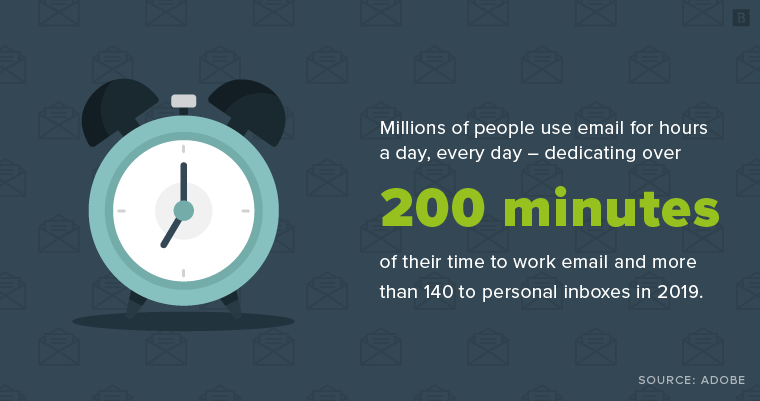It takes a lot to pull off an email marketing campaign right.
Not only do you need compelling, optimized and engaging content to send subscribers, you also need to follow best practices for email list management.
What is Email List Management?
It’s a way of organizing all those email addresses you gather from customers and leads.
By regularly verifying addresses and scrubbing inactive subscribers from your list, you can send more targeted emails and improve metrics like open rate and bounce rate. Using email list management software can significantly streamline this process, ensuring that your contact list is always in good shape.
Customer segmentation factors heavily, as well as list hygiene and permission-based email marketing.
Think of email list management as all the back-end work that goes into ensuring your mailing list is up to date and accurate. And trust us: Such hygienic habits are crucial to deliverability and the success of your email marketing.
Email List Management 101
While consumers like to receive emails from their favorite brands, they don’t have the appetite for unlimited emails. Too often, email subscribers feel inundated by a flood of messages. Another beef they have with sub-par email marketing is the low effort they perceive went into crafting the message.
Dedicated list management can address both grievances and give your brand a fighting chance to cut through the noise in your customers’ inboxes.
How?
Through regular maintenance to keep your contact lists up to date with accurate customer and lead information – that’s how. This entails everything from confirming valid email addresses to removing inactive subscribers. Utilizing email verification tools is an effective way to maintain a healthy email list, ensuring you’re not sending future messages to invalid addresses.
List management also involves list segmentation and contact re-engagement that will help you better manage your marketing and get your email campaign on the right track.
Segmentation is especially important.
Organizing your contacts according to how you got their email addresses or what type of content they consume will help you refine your targeting. For example, you should have sub-lists beneath your master email list, such as those for newsletter subscribers, new leads or in-person event attendees. This targeted email approach ensures that engaged subscribers receive content that’s relevant to them, enhancing your email marketing strategy’s effectiveness.

Why is Email List Management Important?
High-quality list hygiene is fundamental to targeted, personalized email marketing. It’s as simple as that. Your campaign may flounder without a clean mailing list to work from and without the data needed to personalize emails.
List management impacts every aspect of your marketing strategy. It affects:
- Your sender reputation and how much trust consumers place with your brand.
- Your digital marketing metrics like click-through rates, bounce rates and ROI.
- Your ability to engage email users, cultivate relationships and drive attention toward promotions, products and services.
- Your content creation process, as well as promotion and distribution decision-making.
Effective email list management breeds an effective email marketing campaign, so consider assessing how well you manage your mailing list, and what, if anything, you might need to improve.

5 Basic Best Practices for Email List Management
Email list management isn’t all that complex, but that doesn’t mean you should skimp on time and effort. This will set the stage for everything else that comes after. Here are some essential tips to help guide you:
1. Take a permission-based approach
Online users have more protections than ever, giving them choice over who collects their data and how, which has given rise to permission-based email. Recent pieces of legislation like the EU’s General Data Protection Regulation and the California Consumer Privacy Act are data privacy laws that you shouldn’t overlook for email marketing. This means you must ensure addresses on your list have voluntarily opted in. You can do this with a site-based signup form hosted on your website or through other active measures to collect email addresses lawfully.
2. Craft the perfect ‘welcome’ email
First impressions are everything – and that holds true in email marketing. Once a subscriber has opted-in, leverage your welcome email to accomplish multiple goals. For instance, you can use this introductory email to:
- Give users another opportunity to opt in and confirm their approval. Double opt-in strategies have become more common for two reasons. One, doing so covers all compliance bases; two, it ensures you’re collecting info for users with interest and intent.
- Send an introductory promotion. Such offers are more or less expected, like coupons, but just make sure the offer matches the subscriber.
- Improve email deliverability. Ask users to whitelist your brand by adding your company email address to their approved sender list. This helps your marketing emails avoid the limbo that is the spam folder.
- Introduce users to self-service tools they can use to manage their own accounts and subscriptions. For example, give them an option to choose how often they’d like to receive an email from your brand. Online audiences want control, and they’ll appreciate it if your brand makes that possible (within reason).
3. Engage earnestly
Email marketing is hardly a set-it-and-forget-it affair. You need to find out the preferences of your email recipients and devise ways of meeting those expectations. Take the time to ask them, through email, what they like and how often they want to hear from you. You can even inquire about content they enjoy or topics that interest them. Having this insight ahead of time means never sending an irrelevant or unoptimized email, and thus losing credibility points with once-satisfied users.
4. Keep it clean
A clean email list is a happy email list. While it may seem like good sense to collect as many email addresses as you can, casting such a wide net may actually work against you in email deliverability. A large share of dormant and unresponsive accounts can negatively affect key email KPIs like bounce rate and click-through rate. If you’re not sure that your contacts still use the same email, you can always use a search engine tool for emails to find the right addresses. Other list hygiene steps to take include:
- Removing duplicate email addresses.
- Fixing typos, if possible.
- Reengaging unresponsive accounts.
- Cleaning up hard and soft bounces.
- Removing inactive subscribers.
5. Don’t make it difficult to unsubscribe
It probably seems counterintuitive to make it easy for email newsletter subscribers and other subscribers to opt out. However, you need to prioritize the user experience above your own wants at this point.
Segmenting Email Contacts Like a Pro
List segmentation is such an important part of overall list management that we have to give it its own section.
Email segmentation is similar to other forms of consumer segmentation, which is the organization of customers according to demographics, purchase habits, geographic territory or other defining traits and personal information.
Knowing that, you’ll want to approach email list segmentation in the same way – i.e., building out as many categories and tags as you can. Some ways to segment email subscribers include sorting them by:
- Type of asset downloaded (eBook readers vs. white paper readers, for example).
- Position within the company (if you’re a B2B seller).
- Closest-fitting buyer persona (if you’re B2C).
- Geographic location.
- Email activity and open rate.
- Stage in the marketing funnel.
- Purchase history, including overall spend with your brand and frequency of purchases.
- In-person event attendees (have different lists for each event you run/participate in).
- Webinar registrants/attendees.
- Referral source (e.g., social media, search, site opt-in form).
- Trends in engagement.
Want some other inspo? Hubspot has a great blog with segmentation ideas aplenty.
A Note on Automation and Outsourcing
If it sounds like effective list management takes time, that’s because it does. Which brings us to two points of discussion: email marketing automation and outsourcing.
Regarding the former, there’s nothing worse than trying to build and maintain a subscriber list through spreadsheets or an Excel document. What may at first be convenient and intuitive will quickly become burdensome and overwhelmingly complex once you start to grow your email list.
To that end, it is definitely worth looking into what kind of email marketing software (examples: Marketo, Pardot, Hubspot) is available that can help you streamline and condense workflows related to list management. Such solutions can offer a number of advantages, including:
- The ability to send emails on a regular, scheduled basis – which removes haphazard marketing campaign practices.
- Real-time analytics so you have insight into what is performing well and what isn’t.
- Integration with your customer relationship management, allowing you to easily pull data and leverage it for email personalization.
- Process automation, like for automatically validating addresses and other workflows related to sending and distribution. Doing this manually may actually introduce more errors to your subscriber list.
- Creative tools that help you craft compelling email design and copy. Some may even come with email templates you can use to create a cohesive brand presence across your email marketing activities.
In other cases, it may make sense to look for an external mailing list manager. Outsourcing email list management is something many companies, especially smaller firms, consider.
Why?
As we’ve mentioned, effective list management takes diligence and time, which are resources not every firm has to spare. It also takes some getting used to, and a lack of in-house marketing talent may make it difficult to achieve objectives and grow your email list. If you’re looking for list management services, be sure to ask questions like:
- What specific measures will you take to ensure list hygiene?
- How will you segment my email contacts?
- Can you integrate easily with other key software, like my CRM?
- How will you track and measure email marketing metrics?
What to Keep in Mind
Email is a cornerstone of marketing. That being the case, you’ll want to make sure that your overall marketing foundation is solid by conducting regular email list management. Whether you take action yourself or contract out, list maintenance has to be an ongoing activity.
Just remember the guiding principles of effective email list management:
- Permission.
- Verification.
- Segmentation.
Taking these factors into account will help solidify your marketing strategy.
Editor’s Note: Updated October 2024.







